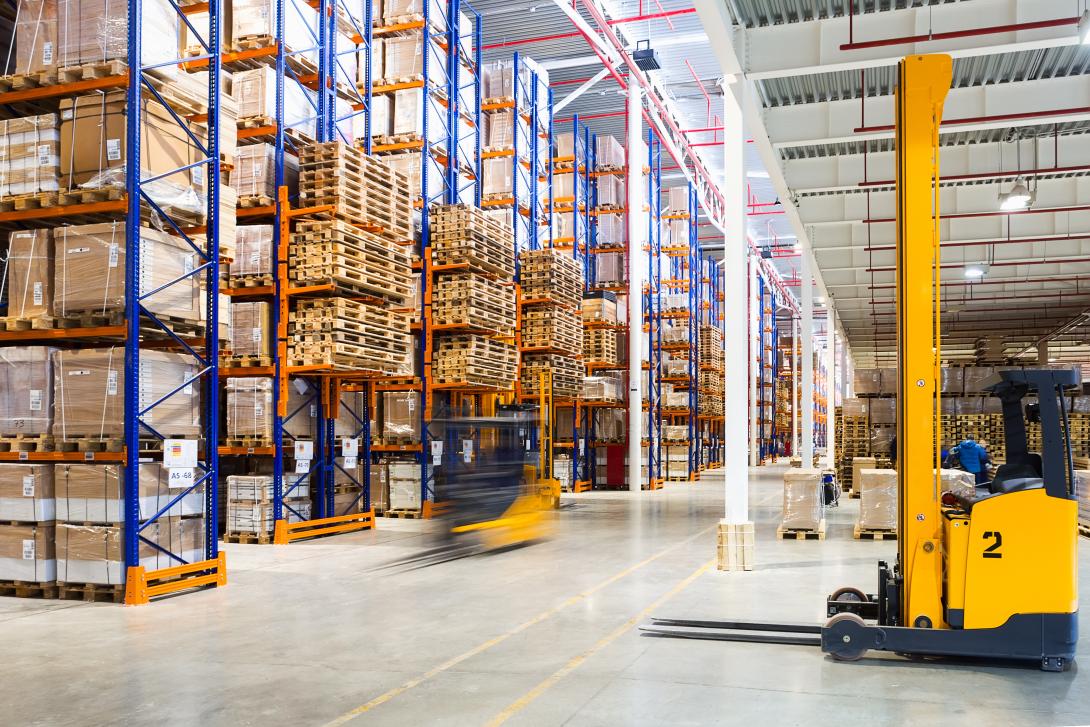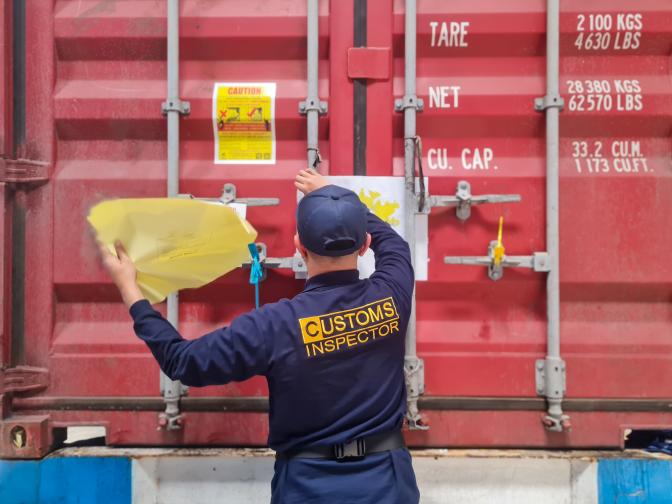Douane afhandeling
Onze software automatiseert douaneaangiftes, genereert documenten en biedt volledig inzicht in het douaneproces voor internationale handel


Douane aangifte in no-time geregeld
Veel logistieke dienstverleners verzorgen voor hun klanten niet alleen de opslag van goederen, maar ook de verzending naar of ontvangst van goederen vanuit het buitenland. Of dat nou binnen Europa is of daarbuiten: handelen met het buitenland vereist kennis en een systeem dat alle douanestromen ondersteunt. Vandaar dat onze software is uitgerust met een uitgebreide douane functionaliteit. Daarmee doet u geautomatiseerd aangifte, worden de benodigde documenten automatisch gegenereerd en heeft u altijd inzicht in het douaneproces.
Bij ons verloopt het aangifteproces met de douane volledig geautomatiseerd. Onze douane software werkt (via EDI) naadloos samen met de systemen van de Belgische douane en andere instanties. Zo maakt u snel en eenvoudig douane aangiftes.
Douane aangifte software
EMCS
Vervoer van accijnsgoederen tussen lidstaten van de EU moet bij de douane bekend zijn, zodat accijns geheven kan worden in het land waar de goederen verbruikt worden. Via het Excise Movement and Control System (EMCS) doet u direct vanuit het WMS melding (e-AD) van vervoer van accijnsgoederen, onder schorsing van accijns.
ACPS
ACPS is het platform voor de uitwisseling van logistieke informatie voor de haven van Antwerpen. Uw containers kunt u direct voormelden bij alle terminals.
NCTS
Het afmelden van T1 documenten was nog nooit zo makkelijk: volledig geïntegreerd in het WMS proces. De controle op Toestemming tot Lossen
loopt mee met het inslagproces, zodat er geen containers meer ongeoorloofd geopend worden. Het opmaken van een T1 voor Vertrek is ook ingebouwd in het WMS proces, inclusief controles op uitgaan.
GDB (nVWA)
Producten van dierlijke oorsprong of levende dieren die de EU worden ingebracht, moeten worden aangemeld bij nVWA. Direct vanuit onze WMS-software doet u vooraanmeldingen (GDB) bij de nVWA en wordt u op de hoogte gehouden van de controles van de betreffende partij.
PLDA (BE) en AGS (NL)
Doe direct vanuit het WMS een invoer- of uitvoeraangifte in PLDA voor België of AGS voor Nederland. Efficiënt en betrouwbaar: u ziet in één oogopslag of de aangifte compleet is. De verschuldigde invoerrechten en BTW worden automatisch bijgewerkt in de aangifte én in de WMS documenten, en daarom ook op de verkoopfactuur. Vervoersdocumenten worden daarnaast automatisch
opgemaakt.
DGVS
Meld vervoersbewegingen op en rond schiphol aan DGVS (Documentloos Goederen Volg Systeem) zónder fysieke documenten via het platform van Cargonaut. Geen handmatige berichten meer: uw DGVS voorraad komt altijd overeen met uw WMS voorraad.
Douane software
Elke haven gebruikt een ander systeem. Ons WMS is volledig af te stemmen op al deze systemen. Zo voldoet u altijd aan de eisen van de betreffende douane.
APCS & TUL
Communicatie met de Antwerpse haven en PSA terminal voor het aanmelden van transporten verloopt direct en geïntegreerd met het WMS proces.
MEER INFO OVER DOUANE AANGIFTE
Lees meer over douane formaliteiten in onze blogs.

Stroomlijn uw douaneprocessen: uw EMCS (accijns) stromen in kaart
Ziet u op tegen uw douaneaangifte? Of is dit juist iets waarin uw organisatie uitblinkt? Hoe u uw aangifte ook doet, één ding is zeker: houdt u zich bezig met internationaal vervoer van goederen? Dan ontkomt u er niet aan. Kies er daarom voor om uit te blinken in uw douaneactiviteiten met een soepel aangifte proces. Maar hoe zorgt u dat u met zo veel verschillende stromen en aangiftes uw activiteiten zo vloeiend mogelijk kunt uitvoeren?
Lees meer
Douane entrepot
Met onze WMS-oplossing voldoet u aan de administratieve verplichtingen die de douane stelt aan uw douane entrepot. Alle in- en uitslagen én mutaties van douane goederen worden automatisch bijgehouden, zodat u altijd inzicht heeft in de voorraad(mutaties) en eenvoudig aan het eind van de maand een GPA aangifte kunt draaien.
Douane integratie & compliance
Door de integratie van douane processen met het WMS versnelt u het aangifte proces aanzienlijk. Vanuit het WMS (in- en uitslagen) worden alle relevante douanegegevens van de goederen aangevuld – volledige integratie voorkomt dubbele invoer en versnelt uw proces. Daarnaast is het mogelijk op strategische punten douane technische controles in te bouwen in de WMS activiteiten, zodat alle afdelingen op een efficiënte manier samenwerken volgens de compliance voorschriften van de douane.
DEMO BOEKEN
Heeft u vragen over het afhandelen van douaneformaliteiten tijdens uw operaties? Of wilt u een demo inplannen? Vul eenvoudig het formulier in, en wij nemen snel contact met u op om een afspraak te maken.